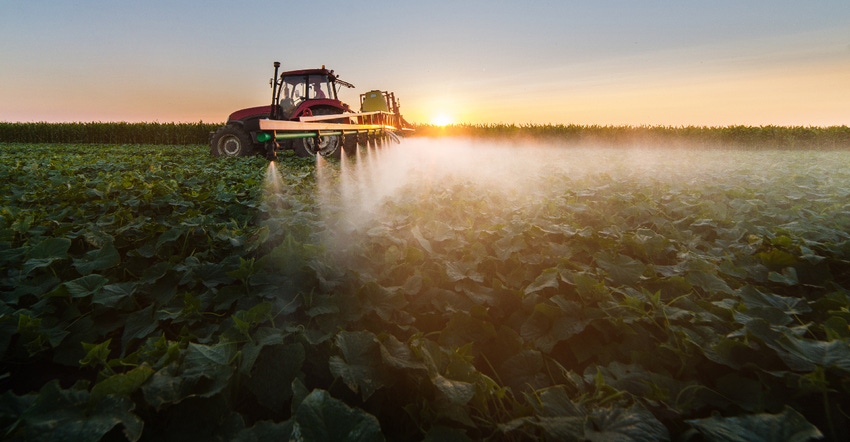December 7, 2020

Frequent changes in pesticide registrations and regulations can make it difficult to stay in compliance. This article provides a few important updates to help certified crop advisers stay on top of a continually changing regulatory landscape.
Dicamba registration and new pesticide labels
In October, EPA announced new registrations for XtendiMax and Engenia herbicides. These two dicamba products were used over the top of resistant soybeans, but had their registrations canceled in summer 2020.
The new federal registrations will expire in 2025 and only allow the OTT products to be used on dicamba-tolerant cotton and soybeans. A third OTT product, Tavium, a combination of dicamba and metolachlor, also had its federal registration extended to 2025. Approval for a fourth OTT dicamba product, FeXapan, is expected.
All new pesticide labels supersede any previous labels that either expired in December or were canceled last summer. The requirement that products may only be mixed, loaded or applied by certified applicators is unchanged.
The EPA-required additional application restrictions will appear on the new labels, including a national spray cutoff date (June 30 for soybeans), a minimum downwind buffer of 240 feet (310 in areas with listed species), and the requirement to include one or more of the following adjuvants in the tankmix: approved pH-buffer, volatility reduction agent, or drift-reducing adjuvant (varies by product). Refer to the new labels for a comprehensive list of the restrictions.
The new labels also feature simplified use directions. Users still need to consult the registrants’ website for some information, such as the required tank additives. All OTT dicamba products will have a dicamba-specific training requirement.
The early version of some of the labels required training every two years, and this may cause some confusion. Current labels for Xtendimax, Engenia and Tavium all have an annual training requirement. (FeXapan is not approved yet.)
All users will have to take the mandatory dicamba-specific training in 2021 before using these OTT dicamba products and annually thereafter. Ohio allows users to take the online dicamba-specific training available on the registrant’s website; other states may have state-specific dicamba training requirements.
Use of leftover product from last year has not been resolved. The labels have expired, and EPA, at time of writing this article, has not decided what restrictions there would be on using product with an expired label.
Without a resolution to this question, it would be advisable to contact the registrant before using old product.
Dicamba: Complaints to the ODA
While some Midwestern states have seen large numbers of dicamba-related complaints, such as Illinois in 2019 (724), Ohio has not seen these large numbers, with 25 complaints to the Ohio Department of Agriculture in 2019 and 16 in 2020. Most dicamba complaints to ODA involved damage to non-dicamba-tolerant soybeans.
Application Exclusion Zone changes
The Application Exclusion Zone was introduced in the 2015 revision to the Worker Protection Standard and applies to outdoor spray applications only.
In October, EPA revised the AEZ definition as “the area surrounding the point(s) of pesticide discharge that must generally be free of all persons during pesticide applications.”
Farm owners and their families (no others) may remain within the AEZ if inside enclosed structures during pesticide application, and if the owner has instructed the pesticide applicator to proceed despite their presence.
The AEZ also was limited to the confines of the agricultural establishment while maintaining the requirement that the handler must ensure the application will not contact anyone on or off the establishment.
AEZ size determination was simplified and spray quality was eliminated as a criterion. The 100-foot AEZ was limited to aerial, air blast and air-propelled spray applications or fumigant, smoke, mist or fog applications. A 25-foot AEZ was established for any spray application made from a height exceeding 12 inches from the soil or planting medium.
Pesticide applicator recertification
Recertification will look different in 2021 with ODA allowing Ohio State University Extension and other organizations to offer live, online recertification webinars.
The OSU Extension Pesticide Safety Education Program also will offer a self-paced, online course for recertification. Private pesticide applicators should check with their county Extension office for the in-person and online opportunities that may be offered in 2021.
Rose is director of the Pesticide Safety Education Program at Ohio State University Extension. Johnson is a certified crop adviser and sales agronomist with PCT Sunrise/Sunrise Cooperative.
You May Also Like




